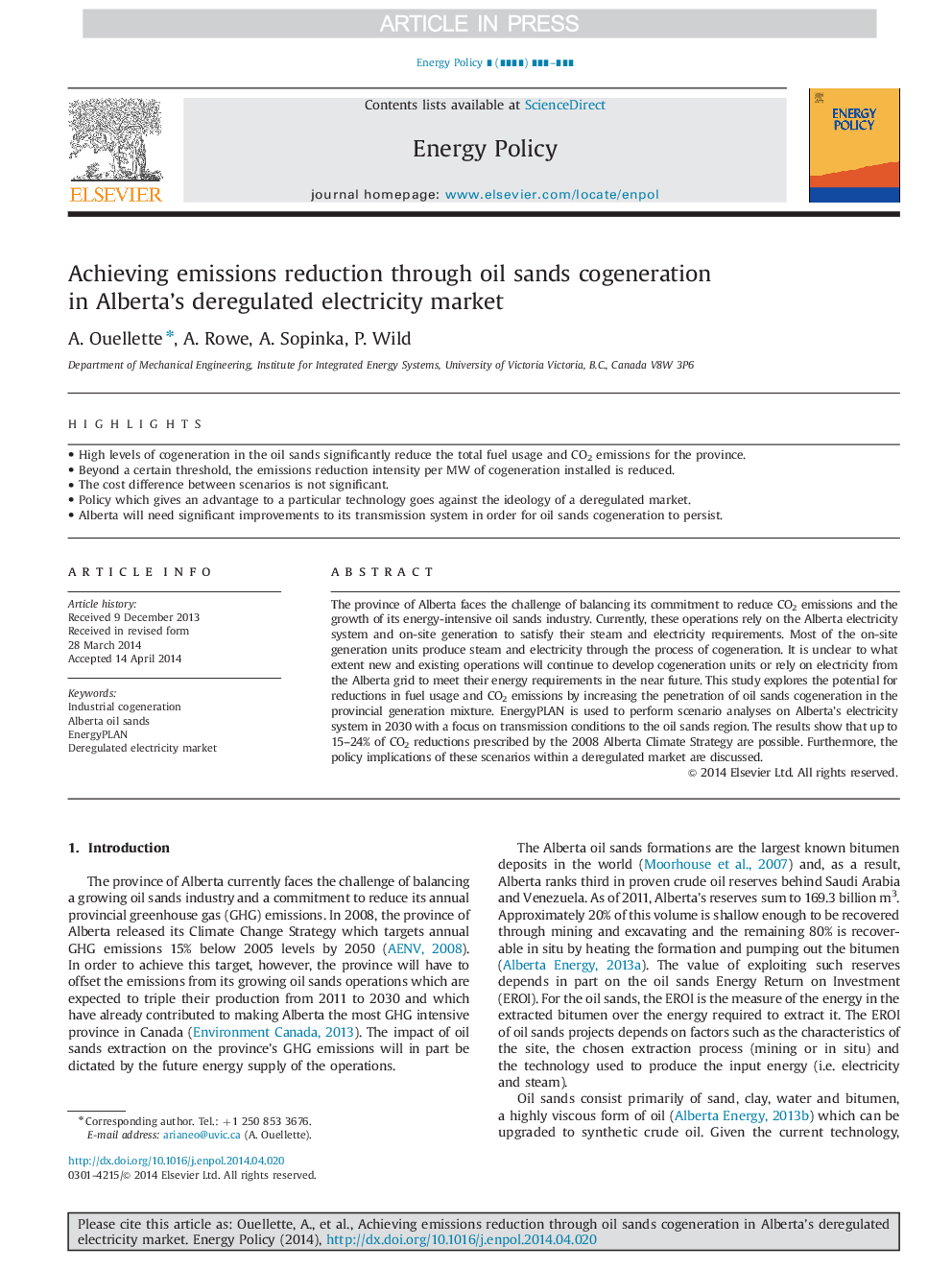| Article ID | Journal | Published Year | Pages | File Type |
|---|---|---|---|---|
| 7401836 | Energy Policy | 2014 | 9 Pages |
Abstract
The province of Alberta faces the challenge of balancing its commitment to reduce CO2 emissions and the growth of its energy-intensive oil sands industry. Currently, these operations rely on the Alberta electricity system and on-site generation to satisfy their steam and electricity requirements. Most of the on-site generation units produce steam and electricity through the process of cogeneration. It is unclear to what extent new and existing operations will continue to develop cogeneration units or rely on electricity from the Alberta grid to meet their energy requirements in the near future. This study explores the potential for reductions in fuel usage and CO2 emissions by increasing the penetration of oil sands cogeneration in the provincial generation mixture. EnergyPLAN is used to perform scenario analyses on Alberta's electricity system in 2030 with a focus on transmission conditions to the oil sands region. The results show that up to 15-24% of CO2 reductions prescribed by the 2008 Alberta Climate Strategy are possible. Furthermore, the policy implications of these scenarios within a deregulated market are discussed.
Related Topics
Physical Sciences and Engineering
Energy
Energy Engineering and Power Technology
Authors
A. Ouellette, A. Rowe, A. Sopinka, P. Wild,
